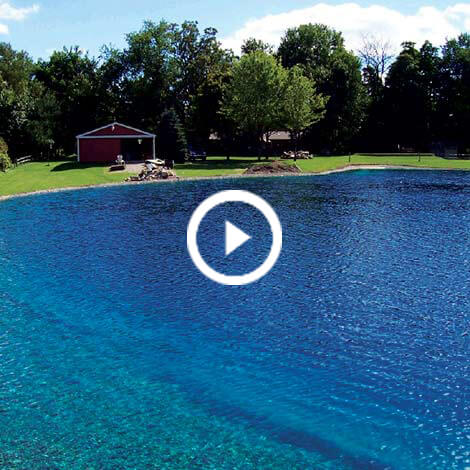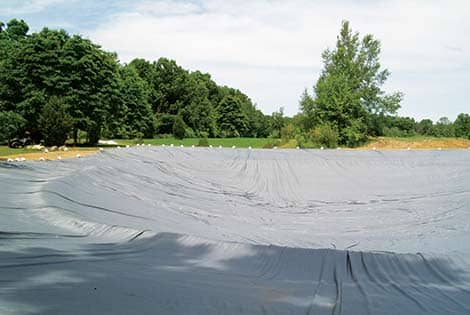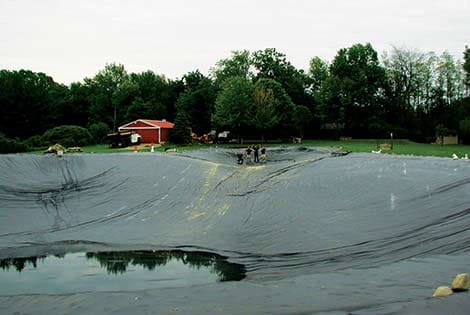Ponds add beauty to a landscape and provide an excellent recreational location in your own backyard, but not everyone is lucky enough to have soil that will allow them to make an earthen bottom. For land owners who are not able to hold water with just soil alone, liners provide an excellent option for retaining water.
Smaller Ponds (under 5,000 sq ft)
For water gardens and smaller fish ponds, 45 Mil EPDM Rubber Pond Liners are an excellent choice. These liners are available in precut sizes up to 50' x 100'. The EPDM (ethylene propylene diene monomer) material is fish safe, UV resistant, and can easily conform around plant shelves. To protect the liner from rocks and allow gas to escape, Pond Underlayment should be installed under the liner. For more information on how to install an EPDM liners, please click here for a short video on installing a water garden.
Larger Ponds (over 5,000 sq ft)
Using EPDM liners for larger ponds can require a lot of field seaming and the material is not durable enough to handle large applications. Instead, for ponds over 5,000 sq ft, The Pond Guy recommends using
Custom Size Large Pond Liner. When installing these liners, 12" of soft soil or sand under the liner to act an underlayment is suggested. Large pond liners are made from PVC (polyvinylchloride) or RPE (reinforced polyethylene) material and custom fabricated to reduce field seaming.
Large Liner Options
- PVC is widely used in irrigation reservoirs, detention ponds, and golf course ponds. This liner is very flexible and cost effective; however, it can degrade by sunlight. To protect it, the liner should be covered with at least 12" of soft sand or soil.
- RPE is more durable due to its reinforcing and is recommended for areas with water activities, livestock or wildlife ponds, irrigation reservoirs, and golf course ponds. RPE is more resistant to sunlight, but we suggest covering it with one foot of soft sand or soil in areas where it may be exposed to sunlight (e.g., ponds edge).
- Liner Thickness varies for each type of material. PVC liners are available in 20 and 30 millimeter thicknesses, whereas the RPE is available in 36 and 45 millimeter. The higher the number, the more durable and puncture-resistant the liner.
Is a Liner Right for You?
When determining if a liner is the best option for you, some considerations should be made:
- Existing water – Many ponds retain some water; however, we do not recommend lining a pond that contains more than 25% of its fill capacity for any extended period of time. If your pond is more than 25% full and you want to use a liner, you would need to drain the pond before laying the liner or put at least 2' of soil atop the liner.
- Pond size – Measuring your pond is best accomplished by using a flexible tape measure (available at local hardware stores). Stretch the tape measure from waterline to waterline allowing the tape to contour the pond's bottom. In general, we recommend adding an additional 15' to 20' to this number to make up for the liner settling and the anchoring trench. When doing the installation, the anchor trench will hold the additional liner and keep it secure; it is located 5' from the pond's edge.
- Slope – Steep slopes can put too much stress on a liner and cause premature wear. Both PVC and RPE liners are designed to be used in ponds no steeper than a 3:1. For example, in a pond that has a 3:1 slope, if you drew an imaginary 3' horizontal line from the pond's edge, the pond would be 1' deep at the end of your line.
Custom PVC and RPE Pond Liners are specific to each pond site. Looking to order your own? Fill out our inquiry form to give us a little more information about your pond and liner needs. If you have further questions about pond liners, give us a call at 866-766-3435, and one of our pond experts will be happy to assist you directly.
Last Updated: February 10, 2023




